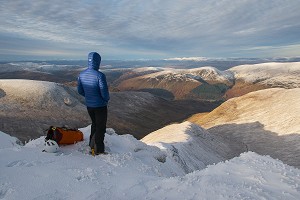
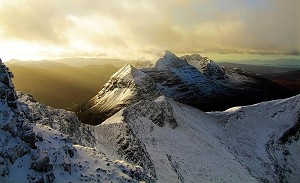
This article details the remit of the award, how to register for it and what exactly it covers. This article has been produced in conjunction with the Mountain Leader Training Association (MLTA).
VIDEO: Winter Mountain Leader Award
The Course
Holders of the Mountain Leader award (sometimes called the 'Summer' Mountain Leader award) are qualified to guide walkers over all UK terrain, but in summer conditions only. To guide walkers in winter conditions you'll need to gain the Winter ML award. For the purposes of MLTUK awards, summer and winter aren't defined by periods of time but by the conditions that prevail – 'winter conditions' means ice and snow prevail or are forecast.
The demands of winter walking are much greater than those of summer walking: it's a more intensive experience that requires higher fitness levels, better navigation skills and a broad knowledge of what to do in extremely adverse mountain weather. In many ways, winter ML skills are a progression of ML skills, so you need to gain the ML before you can go for the Winter ML.
Winter Mountain Leader courses cover snow analysis and avalanche avoidance, snow holes and emergency shelters, ice axe and crampon skills, security on steep, snow covered ground, cold weather injuries, winter navigation, winter weather and expedition planning. Winter ML holders aren't qualified to instruct winter climbing skills and techniques – the minimum qualification for this is the Mountain Instructors Certificate.
If you need to gain more experience before taking the Winter ML training course, seek instruction from a Mountain Instructor, British Mountain Guide or take a winter mountaineering course at a mountain centre.
All Winter ML training and assessment courses take place in Scotland, because Winter Mountaineering is the special area of responsibility of Mountain Leader Training Scotland. However, once you've got the Winter ML, you can use it on hills and mountains anywhere in the UK.
"I started mountaineering with the Scouts and have walked and climbed regularly ever since. After university I moved to the Lakes to train as an outdoor instructor. I quickly gained my Mountain Leader award and it seemed a natural progression to go for the Winter ML award as well.
I did my Winter ML training and assessment at Glenmore Lodge in Scotland and learnt loads along the way. Each day concentrated on different personal skills and ways of coaching them to others, including self-arrest, cramponing, avalanche awareness and the all-important navigation. My one top tip for assessment would be to book one on a full moon! It lit up the whole Cairngorm plateau.
Since gaining my award in 2003 I have returned to Scotland each season to work on winter skills courses. These last anything from one day to a week and go out in the full range of Scottish winter conditions. Anyone heading out in winter conditions needs to have great respect for the weather and be fully prepared for anything they may encounter. I approached the Winter ML as an opportunity to learn more for myself and have been lucky enough to go out to work and share my experiences with others ever since."
Nick Jones holds the Winter ML and MIA and is a member of the Association of Mountain Instructors (AMI). He runs More Than Mountains based in Keswick offering climbing, walking and scrambling courses. He is also an active member of Keswick Mountain Rescue Team.
- You can find out more about him and his instructing services here: www.morethanmountains.co.uk
How to register for the Winter ML
The demands of winter walking are broader and greater than those of summer walking: it's a more intensive experience that requires greater fitness, better navigation and a broad knowledge of what to do in extremely adverse mountain weather. For this reason you need to gain the Mountain Leader award before you qualify to register for the Winter Mountain Leader award.
You also need to be well practiced in the use of ice axes and crampons, have recent experience of hill walking and mountaineering in winter conditions (in at least three different mountain areas of the UK) and have a minimum of 20 Winter Quality Mountain Days under your belt.
What is a 'Winter Quality Mountain Day'?
Winter Quality Mountain Days should involve elements of planning, exploration of an unfamiliar locality, map reading/navigation and more than likely require the use of ice axe and crampons for security. The experience should lead to feelings of accomplishment and satisfaction, even if enjoyment may occasionally be questionable!
What is winter graded ground?
For the purposes of the Winter ML award, think of Grade 1 ground as: 'snow covered ground, often with easy angled steps of ice, neve or rock on which a fall or slip could have serious consequences.'
Training, consolidation and assessment
You can either train for the Winter ML over a six day course, or over a series of weekends. Because you are expected to be competent in winter walking already, the emphasis of training courses is on skills that you'd struggle to learn without expert guidance: evaluating snow conditions, arresting a slide with an ice axe, belaying securely on snow and ice, safe rope work, construction of snow shelters and navigation in extreme winter conditions.
After your training, you are expected to gain extensive winter walking experience and record a minimum of 40 quality winter mountain days, at least 20 of them in Scotland, over at least three winter seasons. You will also have to climb some Grade 1 climbs to gain experience of moving and rope-work on a variety of winter terrain.
The syllabus
1 Snow and Avalanches
Be able to continually evaluate the terrain, snowpack and weather conditions for avalanche hazards.
2 Snow Holes and Emergency Shelters
Be able to construct and use snow holes and emergency shelters.
3 Ice Axe and Crampon Skills
Be very competent in the use of ice axe and crampons on a variety of terrain, including Grade 1 ground, and in a variety of snow and ice conditions. Winter Mountain Leaders will frequently need to give tuition to novice groups in the safe use of ice axe and crampons.
4 Security on Steep Ground
Be able to protect walkers on slopes up to Grade 1 ground and cornices, using appropriate techniques and equipment: eg ice axe, rope, sling and karabiners.
5 Cold Weather Injuries
Understand the causes and avoid the physiological injuries that can occur in cold, wet and freezing conditions. Know how to treat certain injuries.
6 Navigation
Navigation in winter can be very difficult and requires considerable practice. You need to be able to navigate in darkness and whiteout.
7 Winter Weather
Understand winter weather systems and the causes of local weather and snow conditions. Be able to use weather information for planning and while walking in winter.
8 Expedition Skills
Know what kit to take in winter, be able to plan winter expeditions and know the common causes of winter mountain accidents.
- Therm-a-Rest Navis Sleeping Bag 7 Jul, 2013
- Polvere Ski Mountaineering Skis 23 Apr, 2013
- Rab Infinity Down Jacket 7 Apr, 2013
- COMPARISON REVIEW: Mountain Hard Shells 4 Apr, 2013
- The Questionable Ethics Of Down Production 10 Jan, 2013
- VIDEO: The 1922 Trek To Everest Base Camp 23 Sep, 2012
- WITH VIDEO: NEW TNF Summit Series Meru Range 12 Sep, 2012
- Autumn/Winter 2012 Polartec NeoShell Mountain Clothing 7 Sep, 2012
- Patagonia Ultralight Down Jacket 5 Jul, 2012
- Barmasse Attempts North Face Of Karakorum's 'Ogre' 21 Jun, 2012

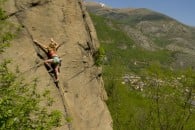

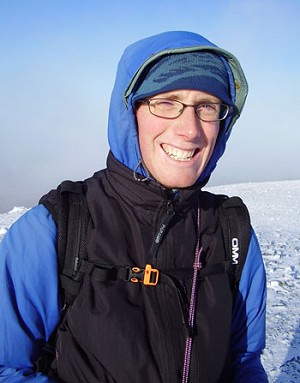
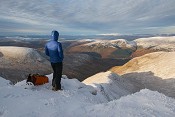

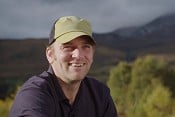
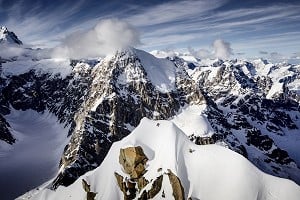





Comments